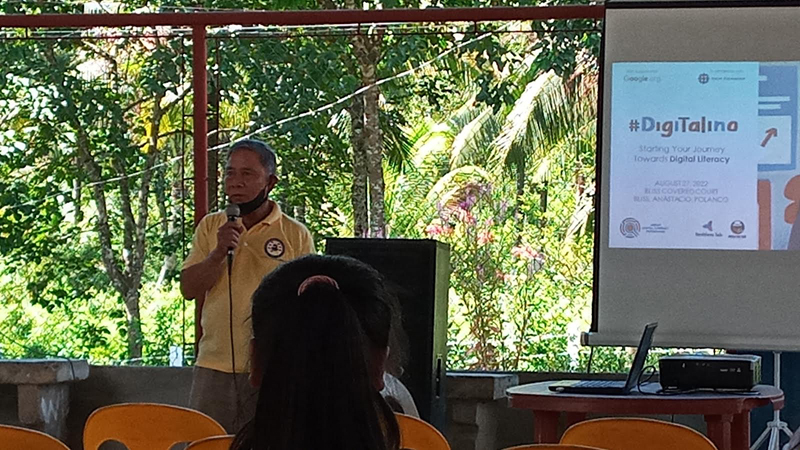In an increasingly digital world, information transfers faster than ever. And while this is a good thing, the challenge now comes in sifting through a myriad of information and identifying what is credible.
For 73-year-old Nerio Salaveria, learning how to spot misinformation is a powerful skill that helps him and his community make informed decisions.
“I used to have such a hard time understanding what is mis/disinformation. With so much information available on social media, it’s hard to decipher what’s true and what’s not, especially for people my age who are used to just taking information as is. Even the elderly in my community get confused by consuming news on the internet–they believe everything just because it’s on social media,” Mr. Salaveria said.
Mr. Salaveria is one of the trainees of the ASEAN Digital Literacy Program (ASEAN-DLP) led by the ASEAN Foundation and supported by Google.org. Through the program, people from various age groups are taught media literacy, including understanding and spotting misinformation and disinformation. The program trains people who will eventually become trainers themselves and help roll out the media literacy curriculum in their communities.
A recent study showed that older adults are especially susceptible to misinformation and disinformation likely due to cognitive deficits, social changes, and digital illiteracy. This is why programs like ASEAN-DLP are essential in bridging the gap and teaching people from varying ages and socioeconomic backgrounds the fundamentals of digital literacy.
As the current barangay councilor of Barangay Anastacio in Polanco, Zamboanga del Norte, the President of the Senior Citizen Association in their barangay, and Vice President of the Senior Citizen Federation of their town, Mr. Salaveria saw the importance of media literacy based on his own experiences. He saw how it would help the elderly in their community.
“The training helped me understand the difference between misinformation and disinformation. I now understand that misinformation is inaccurate information that is usually unintentional and can be corrected, while disinformation has an intent to deceive. Knowing that has helped me sift through what I read or what I hear and decide which is true and which is not,” he said.
Now, instead of believing anything and everything he reads online, he prefers to get his information from valid news sources and from direct sources themselves, including verified social media accounts of government offices and departments. This, he said, has helped him and his community members not to fall for aid scams where they are promised a certain amount in exchange for a sum in return, or false information about increased aid or payouts.
Mr. Salaveria shared that being elderly in an age where everything is on the internet is hard and confusing, that’s why he has used what he learned from the digital literacy program to guide his fellow senior citizens, so they, too, can safely navigate the digital world .
“I advise my fellow elders not to believe everything they see online, especially on social media platforms,” he said. “Using technology may be intimidating for people my age, that’s why I remind them that if there’s something they don’t understand or information they need to verify, seek guidance from their children who are very adept in using the internet.”
As the ASEAN-DLP progresses in the Philippines to engage over 20,000 end beneficiaries, Mr. Salaveria and other master trainers will be reaching deep within their communities, particularly towards underserved groups such as senior citizens living in rural areas or young persons, ensuring that no one is left behind in the fight against misinformation.
Liked this post? Follow SwirlingOverCoffee on Facebook, YouTube, and Instagram.


